Benign Skin Lesions Removal Maitland
We offer cosmetic excisions for benign skin lesions such as: benign moles, cysts, lipomas, skin tags, warts etc. Elixir @ Hunter provides comprehensive skin cancer checkups in Maitland. Some of the cosmetic skin lesions to treat are:
Seborrheic keratosis
A seborrheic keratosis (SEB K) is not a skin cancer. While it often looks frightening, it is a harmless lesion on the skin.
SEB Ks come in many colours. Some are pale, some are very dark, and they can look similar to a wart. Most are bumpy, and the surface of them can feel waxy. Some people have many of them, slowly getting larger in size and numbers. While a SEB K does not need excision, it might be surgically removed due to concern that it may be more sinister. After excision, a SEB K will not grow back.
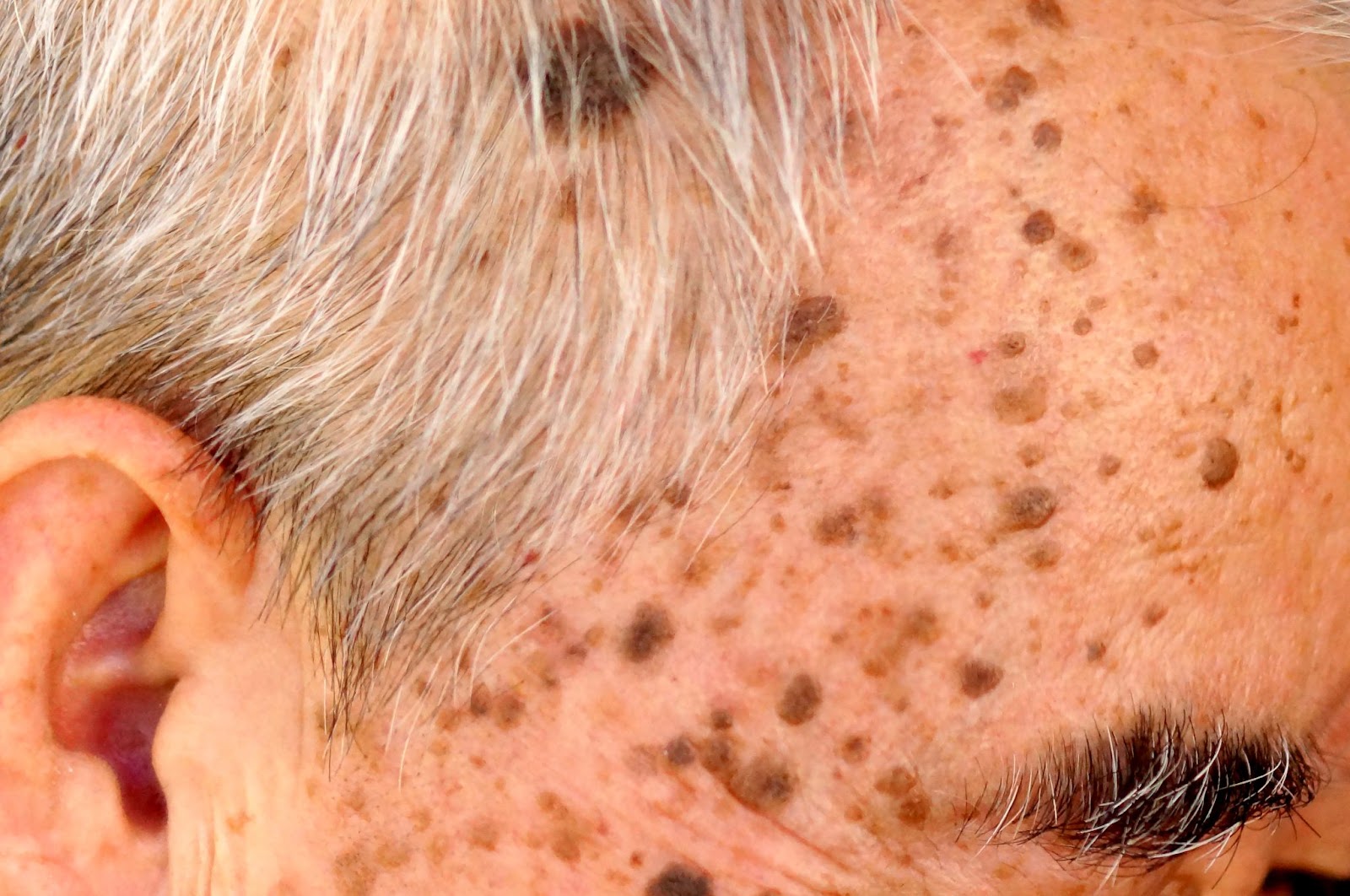
Some people want their SEB Ks removed due to their appearance, and this can be achieved with a procedure called curettage. Under local anaesthetic, the SEB K can be “scooped” off the skin with a skin instrument called a “curette or a shave biopsy blade”. A simple dressing completes the treatment. Small SEB Ks may be removed by cryotherapy or freezing.
Angioma
An angioma is not a skin cancer. It is a harmless benign lesion on the skin. An angioma does not become a skin cancer. Inside the angioma is a bundle of blood vessels. It does not need excision or treatment. Angiomas are typically either red or very dark in colour. They may be flat on the skin or may form a bump on the skin. Their shape and size vary. They do not bleed by themselves, but If they are scratched, they can bleed. Angiomas in some skin locations are very prone to being bumped or scratched like an angioma on the elbow or knee.

At times excision is considered to prevent a troublesome bleed. Skin angiomas can also be treated with a laser specific for capillaries like long pulse Nd:YAG laser or with IPL (Intense pulsed light)
Lipoma
A lipoma is not a skin cancer. It is a harmless tumour made up of fatty tissue beneath the skin. Lipomas are soft, rounded and movable against the skin. A lipoma can cause a large bump in the skin over the lesion. They occur especially on the neck, trunk, arms and legs. People often notice a soft thickening under their skin. The exact cause remains unclear. Lipoma does not require excision unless they are annoying, giving discomfort of looking unsightly. Many people choose to have them excised as they can reach a very large size.
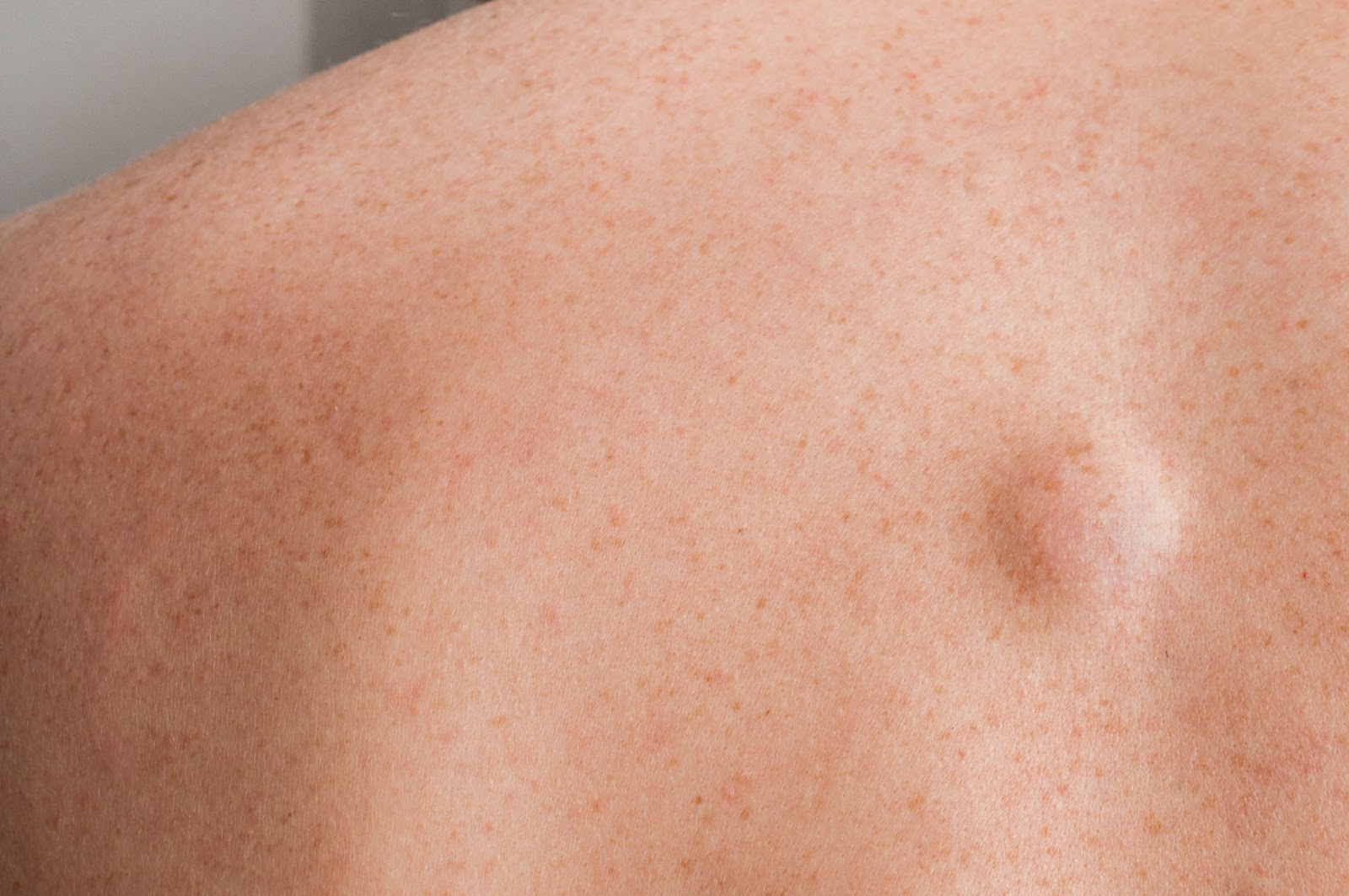
Cysts
Cysts are noncancerous small bumps beneath the skin. They can appear anywhere on the skin, but are most common on the face, neck and trunk. Epidermoid cysts are slow growing and often painless, so they rarely cause problems or need treatment.

You might choose to have a cyst removed by a doctor if its appearance bothers you or if it’s painful, ruptured or infected.
Junctional Naevi
A junctional naevus is a harmless mole on the skin. They are dark moles. Most are flat with a dark brown appearance. Their shape and size vary. Most are circular or oval. These lesions are not sun related. They can appear anywhere on the body. The cause is unclear.

While a junctional naevus does not need excision, it might be excised for two reasons:
(a) concern that it may be more sinister
(b) cosmetic reasons.
Compound Naevi
A compound naevus is a harmless lesion on the skin. They are dark moles. Most are flat with a dark brown appearance, and some have a bump on the skin you can feel. Their shape and size vary. Most are circular or oval. They are rarely painful. They do not bleed by themselves. They usually remain stable in their size and form. Some people have many of them, remaining the same all the time.
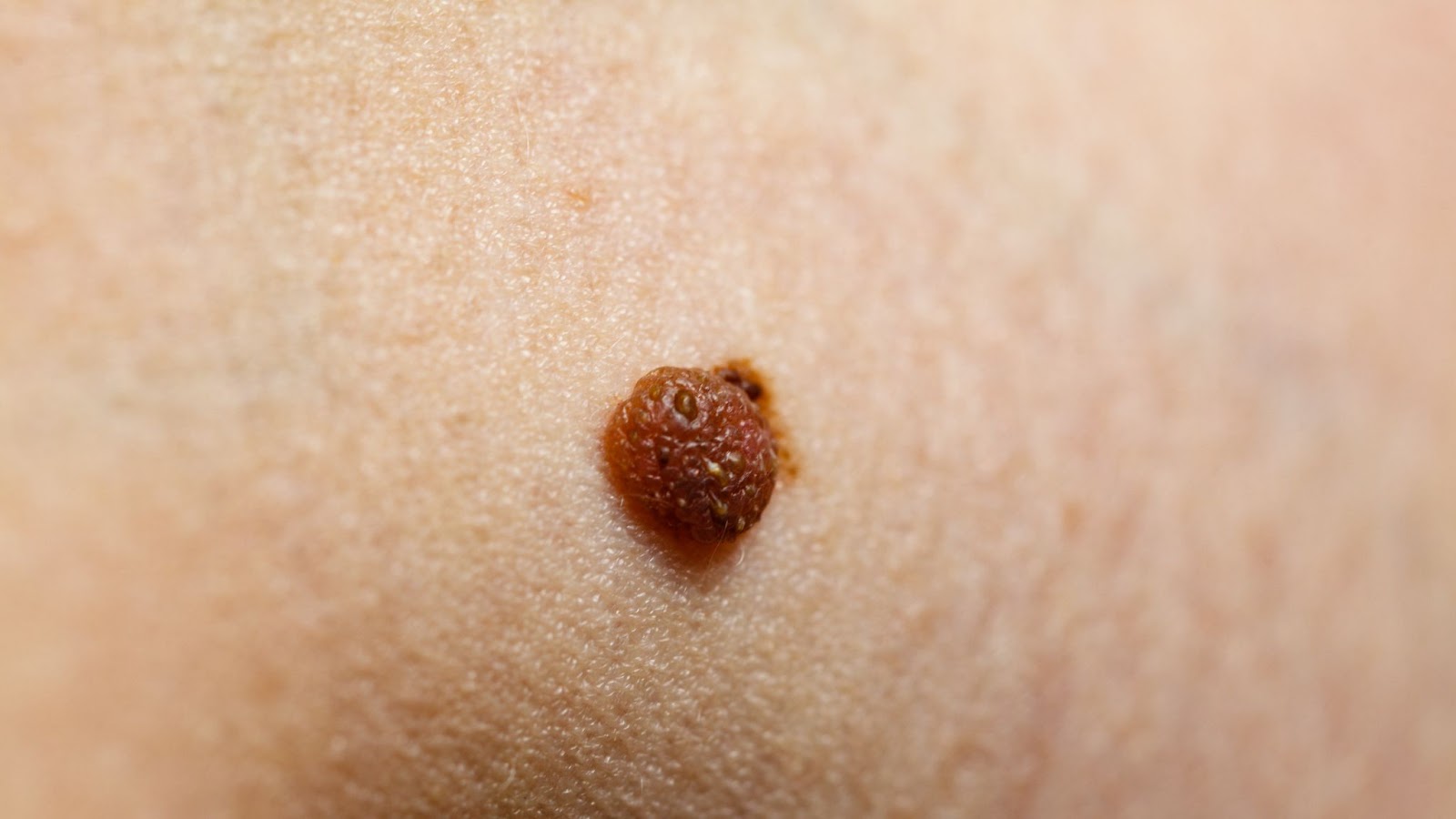
While a compound naevus does not need excision, it might be excised for two reasons:
(a) Concern that it may be more sinister
(b) Cosmetic reasons.
Dermatofibroma
A dermatofibroma is not a skin cancer. Dermatofibroma are button-like, round, hard and elevated nodules. The most common site of dermatofibromas is the legs. They are also common on the arms and trunk. Their texture may be dull or shiny, skin coloured, pink or brown. Most are around 3 to 5 mm in diameter. It is believed they are scar related.
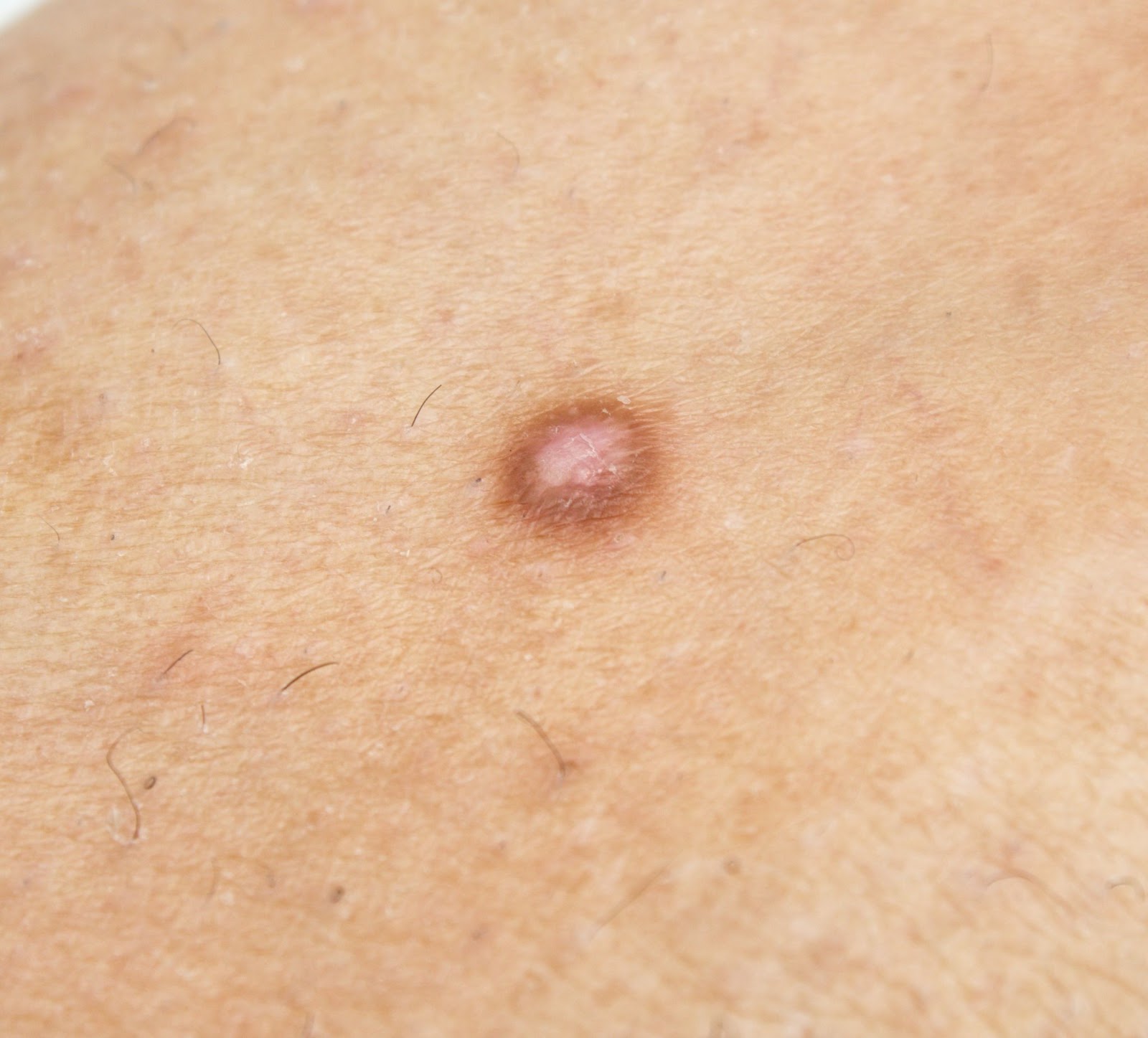
While a dermatofibroma does not need to be excised, it might be excised for two reasons:
- Concern that it may be more sinister
- Cosmetic reasons.
A few people choose to have their obvious protruding dermatofibroma removed.
Chondrodermatitis Nodularis Helicis (CNH)
CNH is a common inflammatory condition affecting the cartilage of the external ear. It is not related to sun exposure and is not a part of the skin cancer family.
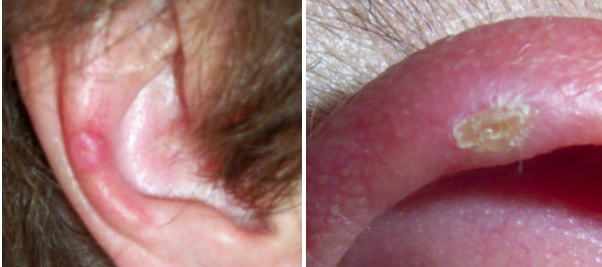
They can become quite painful, and some patients have difficulty sleeping because of the pressure of the ear lesion on the pillow. It appears as a painful firm raised lump usually on the outer rim of the ear. Sometimes a CNH lesion on the ear can look like skin cancer on the ear. The ear location that most likely gets CNH is the place on a person’s ear that points outwards the most.
Its precise cause is unknown although pressure and irritation that comes from lying on the ear is a major factor. People who always sleep on the right side of their head will usually grow CNH on the right ear, and left side sleepers get left ear lesions.
Most people with CNH are not bothered by them and they can be left alone. Other patients have their CNH excised. There are two main reasons for the treatment:
- To exclude skin cancer like SCC.
- The pain of the lesion at night is affecting quality sleep.
CNH can be treated conservatively using special pillows with a small hollowing in the middle to reduce pressure on the affected area which promotes healing. The area can also improve with the use of some creams like Glyceryl trinitrate cream which improves the local circulation and flow of oxygen which leads to healing.
Surgical management can be done if the area is painful to sleep and is not improving with conservative management. The area needs local anaesthetic first. Excess cartilage in the ear is carefully trimmed along with some of the overlying skin. Skin is then usually closed over where the cartilage was taken. There is usually a good cosmetic result. This surgery cures over 80% of cases but sometimes it can recur.
Skin Tags
A skin tag is a common soft harmless lesion that appears to hang off the skin. Skin tags develop in both men and women as they grow older. They are skin coloured or darker and range in size from 1mm to 5cm. They are most often found in the skin folds around the neck, in the armpits, or in the groin area. They tend to be more numerous in obese people.

The skin tags can be safely removed with cryotherapy (freezing), Diathermy (cauterisation) or Laser.
